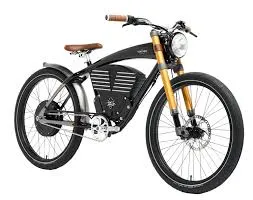
- Afrikaans
- Albanian
- Amharic
- Arabic
- Armenian
- Azerbaijani
- Basque
- Belarusian
- Bengali
- Bosnian
- Bulgarian
- Catalan
- Cebuano
- Corsican
- Croatian
- Czech
- Danish
- Dutch
- English
- Esperanto
- Estonian
- Finnish
- French
- Frisian
- Galician
- Georgian
- German
- Greek
- Gujarati
- Haitian Creole
- hausa
- hawaiian
- Hebrew
- Hindi
- Miao
- Hungarian
- Icelandic
- igbo
- Indonesian
- irish
- Italian
- Japanese
- Javanese
- Kannada
- kazakh
- Khmer
- Rwandese
- Korean
- Kurdish
- Kyrgyz
- Lao
- Latin
- Latvian
- Lithuanian
- Luxembourgish
- Macedonian
- Malgashi
- Malay
- Malayalam
- Maltese
- Maori
- Marathi
- Mongolian
- Myanmar
- Nepali
- Norwegian
- Norwegian
- Occitan
- Pashto
- Persian
- Polish
- Portuguese
- Punjabi
- Romanian
- Russian
- Samoan
- Scottish Gaelic
- Serbian
- Sesotho
- Shona
- Sindhi
- Sinhala
- Slovak
- Slovenian
- Somali
- Spanish
- Sundanese
- Swahili
- Swedish
- Tagalog
- Tajik
- Tamil
- Tatar
- Telugu
- Thai
- Turkish
- Turkmen
- Ukrainian
- Urdu
- Uighur
- Uzbek
- Vietnamese
- Welsh
- Bantu
- Yiddish
- Yoruba
- Zulu
Feb . 11, 2025 09:25 Back to list
can a child ride an electric scooter on the pavement
Navigating the world of electric scooters can be tricky, especially when it involves understanding where children are permitted to ride these devices. With the booming popularity of electric scooters, various regions have had to adapt their rules and regulations. For parents and guardians, ensuring a child's safety while adhering to local laws is paramount. Here's a comprehensive guide to help clarify whether a child can ride an electric scooter on the pavement and the factors you should consider.
Parents play a vital role in ensuring that their children adhere to safety norms and local laws while riding electric scooters. Engage with them about the importance of respecting pedestrian areas, being alert to obstacles, and understanding traffic signals if they venture onto the road. For parents, setting boundaries on where and when their children can use their scooters encourages responsible riding. Evaluating the Environment Apart from legal considerations, the geographical and infrastructural environment should be considered. Urban areas with crowded sidewalks, for instance, might not be suitable for electric scooters, even if local laws permit pavement riding. In contrast, quiet suburban sidewalks may provide a safe practice space under supervision. Always weigh the environment's risk factors before allowing children to scoot around. Buying the Right Scooter Selecting the appropriate scooter for your child plays a crucial role in safety and legality. Consider the scooter's speed limit, weight, and size to ensure suitability for your child's age and skill level. Many manufacturers produce models specifically designed for children, which can navigate the nuances of legal requirements while providing a safer riding experience. Conclusion A Balancing Act Ultimately, whether a child can ride an electric scooter on the pavement depends on various factors, including local laws, safety measures, and parental discretion. As awareness about electric scooters grows, so do efforts to create safer, more accessible infrastructure for users, including children. Until then, exercising caution, staying informed about legalities, and prioritizing safety are essential steps for any parent considering this modern mode of transport for their children.


Parents play a vital role in ensuring that their children adhere to safety norms and local laws while riding electric scooters. Engage with them about the importance of respecting pedestrian areas, being alert to obstacles, and understanding traffic signals if they venture onto the road. For parents, setting boundaries on where and when their children can use their scooters encourages responsible riding. Evaluating the Environment Apart from legal considerations, the geographical and infrastructural environment should be considered. Urban areas with crowded sidewalks, for instance, might not be suitable for electric scooters, even if local laws permit pavement riding. In contrast, quiet suburban sidewalks may provide a safe practice space under supervision. Always weigh the environment's risk factors before allowing children to scoot around. Buying the Right Scooter Selecting the appropriate scooter for your child plays a crucial role in safety and legality. Consider the scooter's speed limit, weight, and size to ensure suitability for your child's age and skill level. Many manufacturers produce models specifically designed for children, which can navigate the nuances of legal requirements while providing a safer riding experience. Conclusion A Balancing Act Ultimately, whether a child can ride an electric scooter on the pavement depends on various factors, including local laws, safety measures, and parental discretion. As awareness about electric scooters grows, so do efforts to create safer, more accessible infrastructure for users, including children. Until then, exercising caution, staying informed about legalities, and prioritizing safety are essential steps for any parent considering this modern mode of transport for their children.
Next:
Latest news
-
The Ultimate Kids' Four-Wheeler Experience
NewsJul.09,2025
-
The Ultimate Guide to Mountain Bikes: Gear Up for Your Ride
NewsJul.09,2025
-
The New Age of Cycling: Electric Bikes for Every Rider
NewsJul.09,2025
-
The Best Kids Bicycles: Ride in Style and Safety
NewsJul.09,2025
-
The Best 3-Wheel Scooters for Kids: Fun, Safety, and Adventure
NewsJul.09,2025
-
Revolutionize Your Ride: Affordable Electric Bikes
NewsJul.09,2025
-
Finding the Perfect Mountain Bike for Every Rider
NewsJul.09,2025



